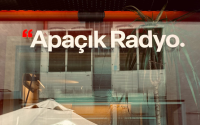7 September 2004The Guardian
For 50 years, nuclear power has been a solution in search of a problem. Now - oh, happy days! - two of them have arrived at once.
Suddenly, climate change exists: George Bush says so. After years of ridicule, the greens' jeremiads about declining oil production are now spilling from other people's mouths. Politicians and the press have at last picked up our arguments, and are using them as a stick with which to beat us. If we care about climate change, if we care about future energy supplies, then surely we should support the revival of nuclear power?
It is a question we have to answer. A few months ago, nuclear power was finished. The public hated it, the corporations wouldn't pay for it, the government wouldn't risk it. Its energy white paper established that there should be no new nuclear electricity without a full public consultation.
In May this began to change. James Lovelock, the environmentalist famous for his "Gaia hypothesis", made this plea in the Independent: "I am a green and I entreat my friends in the movement to drop their wrong-headed objection to nuclear energy." "Green guru goes nuclear!" the headlines said.
They weren't quite right. Lovelock has always been an enthusiast. It is, in both senses, a generational thing. Fifty years ago, Britain was promised that nuclear power would generate "electricity too cheap to meter". That dream lodged in the minds of his generation: almost all the technology's big fans are over 60.
In July, Tony Blair was asked by the parliamentary liaison committee to answer Lovelock's points. "I have fought long and hard," he told the MPs, "both within my party and outside, to make sure that the nuclear option is not closed off... you cannot remove it from the agenda if you are serious about the issue of climate change."
Two weeks ago, Blair's former energy minister, Brian Wilson, bravely abandoning the convention that articles in the Observer should be written in English, assured us that "retrievability has been established as being deliverable. In any case, waste is overwhelmingly a legacy issue. The waste produced by a new generation of nuclear stations would be incremental only at the margins." I haven't the faintest idea what this means, but there might be a clue in the title: "Face the facts. The future must be nuclear."
Last month, the directors of the Centre for Alternative Technology - which is supposed to be developing alternatives to nuclear power - argued that "the worst possible nuclear disasters are not as bad as the worst possible climate change disasters", and suggested "a modest revival of nuclear energy in sites where there are already nuclear installations... to sell the idea to the sceptics".
Their premise is surely correct. Let us use the cruel moral calculus with which we became familiar during the arguments over the Iraq war. The daily discharges from a plant like Sellafield probably kill several dozen people a year. A meltdown could slaughter thousands, possibly tens of thousands. Climate change has already killed hundreds of thousands, will kill millions, and, if we don't do something pretty dramatic pretty soon, could kill billions.
Nuclear power isn't carbon-free. Mining uranium, and building and decommissioning power stations all use oil, and concrete releases carbon dioxide as it sets. But the total emissions, according to the International Atomic Energy Agency, are tiny by comparison with the carbon dioxide produced by burning fossil fuels.
It certainly looks more expensive, when the costs of decommissioning and waste disposal are taken into account. But what about the full costs of burning coal and gas? These are, and should be, incalculable: how do you put a price on global starvation?
And it may no longer be true to say that there is no safe means of disposing of nuclear waste. I have just read a technical report produced by the Finnish nuclear authority Posiva which, to my untrained eye, looks pretty convincing. The spent fuel is set in cast iron, which is then encased in copper and dropped down a borehole. The borehole is filled with saturated bentonite, a kind of clay. Posiva's metallurgists suggest that under these conditions the copper barrier would be good for at least a million years.
Of course, what can be done is not the same as what will be done. There's a danger that Posiva's good example is used as a Potemkin village by the rest of the nuclear industry: a showcase project which creates the impression that the problem has been sorted out. We certainly can't expect Britain's nuclear generators to behave as responsibly as Finland's.
On Friday, for example, the European commission took the British government to court over Sellafield's refusal to let European inspectors examine one of its dumps. (Didn't we go to war over something like this?). Some 1.3 tonnes of plutonium has been sitting around in ponds there for about 30 years. Last Tuesday, the Guardian revealed that British Nuclear Fuels has secretly buried 10,000 cubic metres of nuclear waste from other countries. This sort of thing goes on all the time. The UK Atomic Energy Authority used to chuck its waste into two open holes in the cliffs beside its power station at Dounreay. One of the shafts exploded in 1977, scattering plutonium over the beaches, but the authority didn't bother to tell anyone for 18 years. The Ministry of Defence has dumped 17,000 tonnes of nuclear waste on the seabed off the coast of Alderney.
This, rather than Posiva's expensive method, is the kind of disposal we can expect from most of the world's nuclear generators. So it's probably fair to say that the nuclear industry will kill tens of thousands. If, as seems ever more likely, terrorists get hold of some of this stuff, the deaths could run into millions.
So the moral calculus shifts a little, but still comes down on the side of nuclear power, if that is the only alternative to burning fossil fuel. But it's not. When Lovelock claimed that "only one immediately available source does not cause global warming and that is nuclear energy", he was wrong on two counts. It is not the only one, and it is not immediately available.
A new generation of nuclear power stations can be built only with government money: the private sector won't carry the risk. It would take at least 10 years, and it would cost tens or possibly hundreds of billions of pounds. The government will not spend this money twice: it will either invest massively in nuclear generation or invest massively in energy-saving and alternative power. The Rocky Mountain Institute has shown that you can save seven times as much carbon through electricity efficiencies as you can by investing in nuclear. And you kill no one. There'd be plenty of change too for a research programme to develop cheaper solar cells, with which, in time, almost every building in Britain could be roofed.
So the dilemma established by James Lovelock and explored by Tony Blair and his incoherent ministers is a false one. There need be no choice between two kinds of mass death. We are still permitted to choose life.






